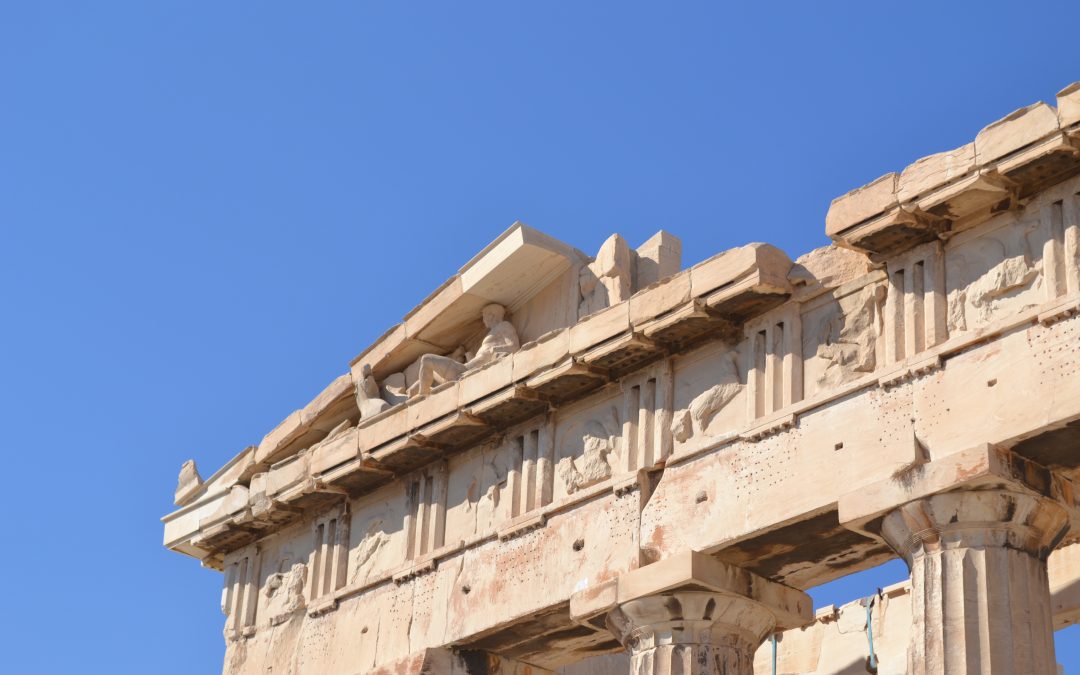 |
| Parthenon at Night |
 |
| Acropolis Museum with Third Floor in Direction of Parthenon |
Parthenon by the British in the early 1800’s. The Elgin Marbles, now displayed in the British Museum, include pediments and friezes that largely defaced the Parthenon. Greece has demanded they be returned. Britain has maintained that Athens does not possess a museum adequate to hold them. Voila! The Greeks built a new museum to hold their heritage—and it is a marvel. The building is glass with wide open spaces, much less crowded than portions of the British Museum, with a third floor oriented in the same direction as the Parthenon. Now the British are arguing that returning the marbles to Greece would set a precedent for other works the Empire obtained. (And it probably would!) Our trek up the imposing hill to the Acropolis the following day was greatly enhanced by having visited the museum.
 |
| Old and New Athens |
Athens is a combination of the old smothered by the new, the modern stuck in the past. We arrived under a cloudy haze that seems to reflect the country’s present mood. Its citizens are depressed and with reason given the economy. Perhaps the economy explains why they are so gracious to tourists, one source of income. Whenever Athenians see a tourist with a map they stop to help and, unlike some other countries, they are not trying to send you to their brother’s shop. They answer your questions, orient you, and send you on your way with a smile. It was a local man who told us that it was too early to eat dinner anyway (the direction we were seeking) and, if we hurried, we would be at the Tomb of
 |
| At the Tomb of the Unknown Soldier |
the Unknown Soldier just in time for the changing of the guard. “It is worth seeing,” he assured us—and it was–with the choreographed balletic movements of soldiers, in uniforms copied from the days when the Ottomans occupied Greece.

